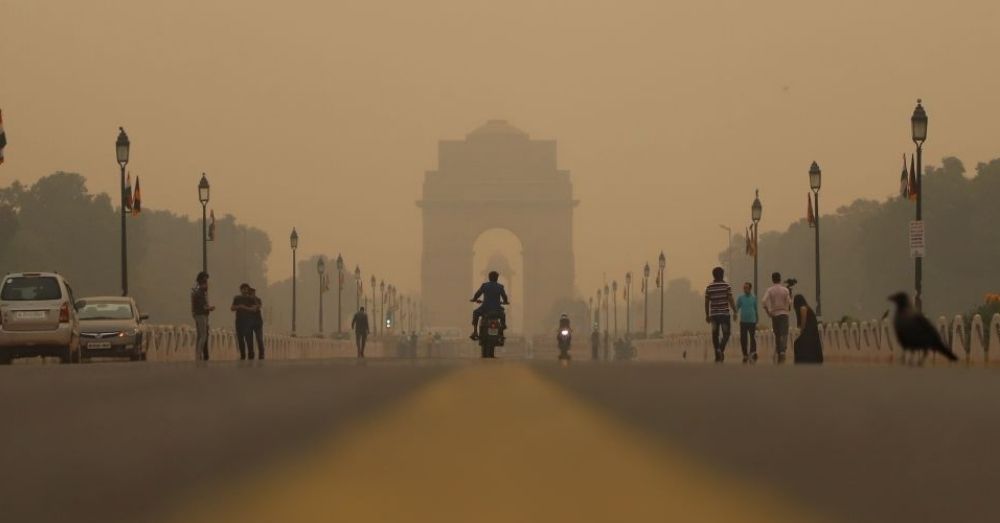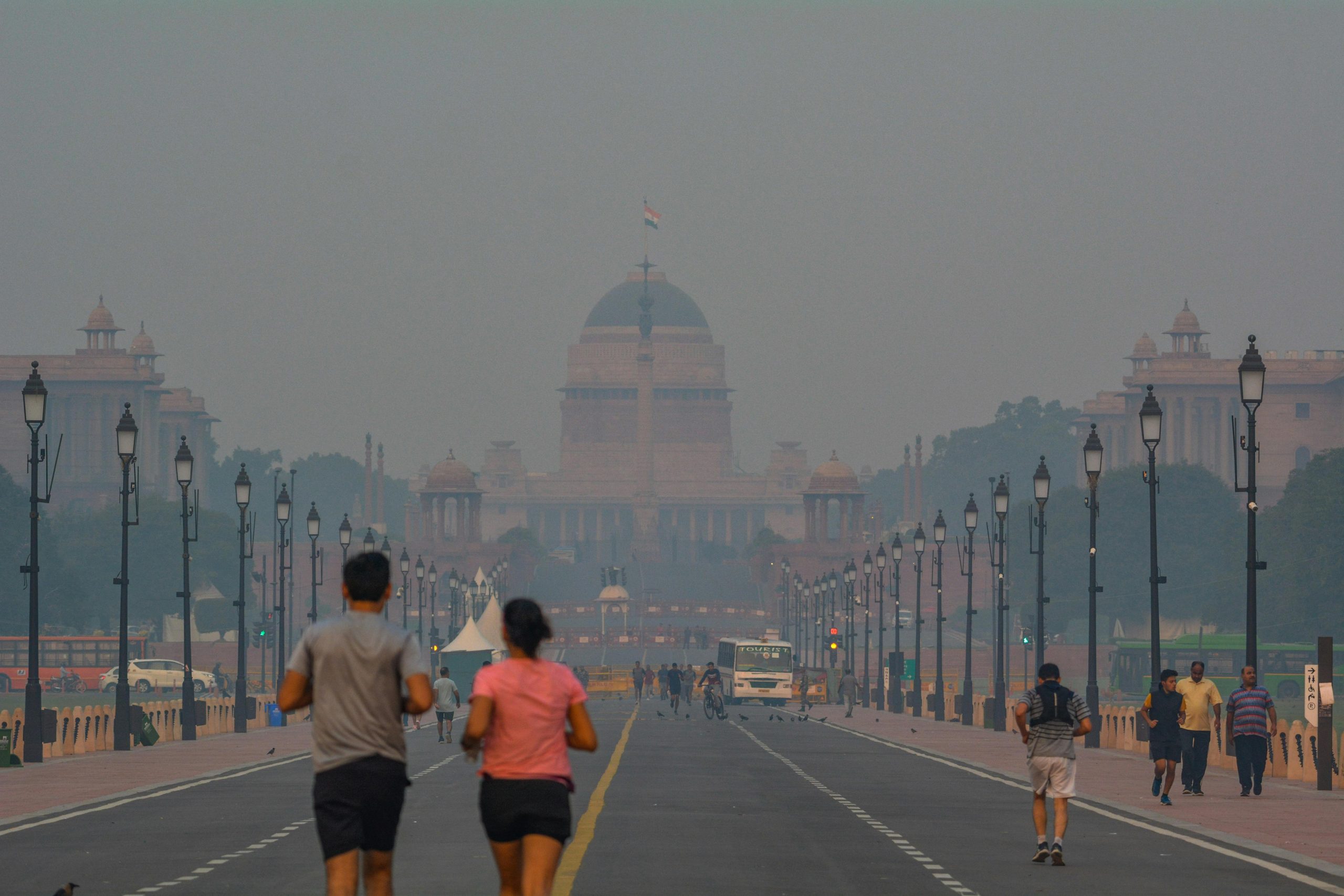Every October, like clockwork, Delhi transforms into a gas chamber. The Air Quality Index (AQI) shoots past 400, sometimes touching 500, making the capital officially more hazardous than smoking two packs of cigarettes a day.
Social media erupts with outrage.
Politicians blame farmers.
Farmers blame stubble.
Everyone blames everyone. And then, by February, we collectively forget about it until next Diwali.
Here’s the uncomfortable truth nobody wants to hear: Poor air quality in Indian cities isn’t an anomaly waiting to be fixed. It’s the predictable outcome of a society that fundamentally doesn’t understand—or care about—how the hell a functional city actually works.
Delhi’s year-to-date PM2.5 averages have repeatedly breached health standards, making it the second most polluted city this year. Mumbai’s real-time readings routinely sit multiple times above the World Health Organisation’s guideline of 15 µg/m³. We’re not slightly off target—we’re playing a completely different sport.
A 2023 study by the University of Chicago’s Energy Policy Institute found that residents of Delhi lose approximately 10 years of life expectancy due to air pollution. Ten years. That’s not a statistic—that’s a death sentence delivered in installments.
But here’s where it gets interesting. We know these numbers. They’re published annually. The government acknowledges them. NGOs scream about them. And yet, nothing changes.
Why?
Because we’ve confused adaptation with solution.
Indians are fantastic adapters—we adapt to power cuts, monsoon floods, traffic jams, and now, hazardous AQI warnings. We’ve become experts in mitigating suffering rather than preventing it. Rooftop purifiers hum in rich apartments; middle-class parents buy masks and schedule playtime around hourly AQI readings. The poor—who cannot buy time or filters—pay with their lungs.
This is breathing on credit. And the bill is coming due.
The Tragedy of the Commons (Now, an Indian edition)
The 19th-century economist William Forster Lloyd introduced the concept of the “tragedy of the commons” through a simple example: when shepherds share common grazing land, each has an incentive to add more sheep, even though overgrazing destroys the pasture for everyone. Individual rationality leads to collective disaster.
Replace “grazing land” with “air” and you’ve got Delhi.
Every auto-rickshaw belching black smoke, every farmer burning stubble, every construction site operating without dust control, every middle-class family bursting firecrackers—they’re all acting rationally from their individual perspective. The auto driver can’t afford a new vehicle. The farmer has no cheap alternative to clear his field before the next planting season. The construction company saves money by skipping pollution controls. The family wants to celebrate Diwali traditionally.

None of them see the full cost of their actions because the cost is distributed across millions of lungs. This is what economists call an “externality”—a cost that isn’t borne by the person creating it. Buses, trucks, factories, construction sites, households burning garbage, and farmers burning stubble—all add smoke because the marginal private cost of polluting is near zero while the social cost is enormous. And here’s the kicker: until we force people to internalise these external costs, nothing will change.
The libertarian economist Ronald Coase won a Nobel Prize partly for explaining that environmental problems stem from poorly defined property rights. If you own a piece of land, you protect it. But who owns the air? Who owns the curb? The municipality? The shopkeeper? The parked SUV? Nobody and everybody, which in practice means nobody gives a damn.
China faced similar air quality disasters in Beijing a decade ago, with readings that matched Delhi’s worst days. But here’s the difference: China’s authoritarian government could actually make people internalise costs. They mandatorily closed industries, switched household fuels, restricted vehicles, and aggressively relocated polluting plants. Beijing’s PM2.5 levels dropped dramatically from 2013 onwards—roughly 40% improvement.
Did it require trampling on individual freedoms? Absolutely.
Did it work? Also absolutely.
Now, let me say something that’ll get me cancelled: the average Indian citizen doesn’t understand how societies function. That sounds harsh, but stay with me.
This isn’t about intelligence—it’s about civic literacy.
How many Indians understand the concept of externalities?
How many have heard of the tragedy of the commons?
How many can explain why their individual actions matter to collective outcomes?
The answer is depressingly close to zero.
You can’t solve complex policy problems when the electorate doesn’t understand them. Democracy requires informed citizens. When citizens don’t grasp cause and effect, politicians have no incentive to implement unpopular solutions.
Try telling a farmer he can’t burn stubble anymore without providing a viable alternative. Try convincing a lower-middle-class family to scrap their fifteen-year-old two-wheeler. Try explaining to a construction worker why his livelihood should be sacrificed for something he can’t see or measure.
The government won’t do it because votes matter more than lungs. And honestly, can you blame them? Cleaning the skies would mean hard, visible costs: removing inefficient vehicles, retrofitting factories with pollution control devices, enforcing construction dust rules, compensating farmers to adopt no-burn practices. That means politicians asking citizens to accept short-term pain for long-term gain.
Spoiler: politicians rarely run campaigns on “Today we will make your commute costlier so your grandchildren can breathe.”

Meanwhile, the enforcement apparatus is a joke. The Delhi Pollution Control Committee has fewer than 200 field officers for a city of 20 million people. India’s monitoring network is improving, but stations are uneven, calibration is spotty, and many citizens still rely on apps that aggregate data from disparate sources. Public outrage spikes when an app shows “hazardous” but subsides when the next day’s wind disperses the smoke. Outrage, then, is meteorological—a mood, not a movement.
Courts issue dramatic pronouncements. Governments file compliance affidavits. Special task forces are constituted. Then the next election cycle absorbs all outrage into soundbites. The enforcement deficit isn’t a bug; it’s a feature of political incentives.
Civic Sense: The Dog That Didn’t Bark
Travel to Singapore or Japan—cities that transformed through a mix of enforcement and cultural shift. Tokyo has population density comparable to Mumbai, but air quality five times better.
Why?
The Japanese concept of “meiwaku” (causing trouble for others) is drilled into children from birth. You don’t litter because it creates work for others. You don’t pollute because everyone breathes the same air.
Now walk through any Indian city. Much of urban India’s civic culture normalises encroachment—literal encroachment onto pavements, drains, and public spaces—and tolerates infringements of shared rules.
Garbage on streets? That’s the municipality’s problem.
Spitting paan on walls? Who cares.
Running a diesel generator all night? I paid for it, it’s my right.
Breaking queue? Everyone does it.
Property rights in urban India are messy. Parking space belongs to whoever arrived first. Pavements are annexed by tea stalls. Public complaints mean a tedious trip to the right office that often ends with a bribe or a shrug. When rules are fungible and enforcement is discretionary, the market mechanisms libertarians admire—like pollution pricing, tradable permits, or liability suits—struggle to land. Who do you sue when the “public good” you’re buying is defined, regulated, and monetised in fragments?
We’ve cultivated a culture of civic apathy where individual convenience trumps collective wellbeing every single time. And before you blame poverty, remember that Japan and Singapore weren’t rich when they started building these norms.
The institutions that make free-market environmentalism work are precisely the ones that are weak in India: reliable legal enforcement, trusted registries, and a civic class that enforces norms without asking for permission.
The Consent and Privacy Paradox
Here’s something darkly amusing: the same urban Indians who’ll lose their minds over privacy concerns regarding Aadhaar or facial recognition see nothing wrong with forcing their neighbors to breathe toxic smoke from their garbage burning or firecrackers.
You want privacy for your data but not for anyone’s lungs? You demand consent for how companies use your information but not before you pollute shared air?
This selective libertarianism is the ultimate hypocrisy. Real libertarianism requires reciprocity—your right to swing your fist ends where my nose begins. Your right to burn garbage ends where my lungs begin. But we’ve somehow constructed a worldview where individual liberty means “I’ll do whatever I want and consequences are someone else’s problem.”
The European Union’s GDPR represents the world’s strictest privacy regulation. Yet these same countries have equally strict environmental regulations. Why? Because they understand that liberty without responsibility is just selfishness with a fancy name.
Why Government Won’t Save You
Indian municipalities are underfunded, understaffed, and operating on institutional knowledge that hasn’t evolved since the British left. India’s federal structure means climate and air regulations are shared across municipal, state, and central agencies. Responsibility diffusion is a bureaucrat’s dream: blame the neighboring state’s stubble burners, the national government’s coal policies, or the municipal corporation’s road dust.

The National Clean Air Programme, launched in 2019 with much fanfare, has achieved almost nothing measurable. Target was to reduce PM2.5 and PM10 by 30% by 2024. We failed. Spectacularly.
Why? Because solving air pollution requires three things Indian governments can’t or won’t do:
First, massive investment in public infrastructure—metro systems, electric buses, cycling lanes. Beijing invested $120 billion in air quality improvements between 2013 and 2022. India’s entire Clean Air Programme budget for five years was less than $500 million. We’re not serious about this.
Second, strict enforcement with real penalties. Courts have ordered retrofitting of factories with pollution control units and upgrades to coal plants, but on-ground compliance has been partial. The legal machinery moves at glacial pace where injunctions are years old and penalties are bookkeeping items.
Third, visible trade-offs that citizens accept. London’s Congestion Charge and Ultra Low Emission Zone (ULEZ) reduced traffic volumes and emissions. Stockholm’s congestion tax showed sustained reductions. These models depend on preconditions India struggles with: robust digital payment systems, universal vehicle registration, social acceptance of user fees, and high trust that revenue will be used for public benefit rather than siphoned off.
Londoners grumbled but largely bought the narrative that pay-to-drive reduces congestion and pollution. Indian commuters would bristle, and political backlash could be lethal to reformers.
The Privatisation of Breathing
Meanwhile, startups sell air purifiers like talismans—buy one, and your living room becomes a personal oasis while the city coughs outside. That’s privatised breathing: the market for clean air becomes a luxury good, accessible to those who can pay for filters and relocations, leaving the rest to the commons.
The second-hand vehicle market in India is enormous. Old diesel trucks, poorly maintained buses, and cheap retrofit kits keep emitting because the economic incentives to scrap them are weak. Penalise old diesel without compelling alternatives and you’ll be accused of punishing the poor. Make industry pay for emissions and you raise input costs that lobbyists will bury in consultancies and committee meetings.




 Dr. Jaimine Vaishnav is a faculty of geopolitics and world economy and other liberal arts subjects, a researcher with publications in SCI and ABDC journals, and an author of 6 books specializing in informal economies, mass media, and street entrepreneurship. With over a decade of experience as an academic and options trader, he is keen on bridging the grassroots business practices with global economic thought. His work emphasizes resilience, innovation, and human action in everyday human life. He can be contacted on jaiminism@hotmail.co.in for further communication.
Dr. Jaimine Vaishnav is a faculty of geopolitics and world economy and other liberal arts subjects, a researcher with publications in SCI and ABDC journals, and an author of 6 books specializing in informal economies, mass media, and street entrepreneurship. With over a decade of experience as an academic and options trader, he is keen on bridging the grassroots business practices with global economic thought. His work emphasizes resilience, innovation, and human action in everyday human life. He can be contacted on jaiminism@hotmail.co.in for further communication.